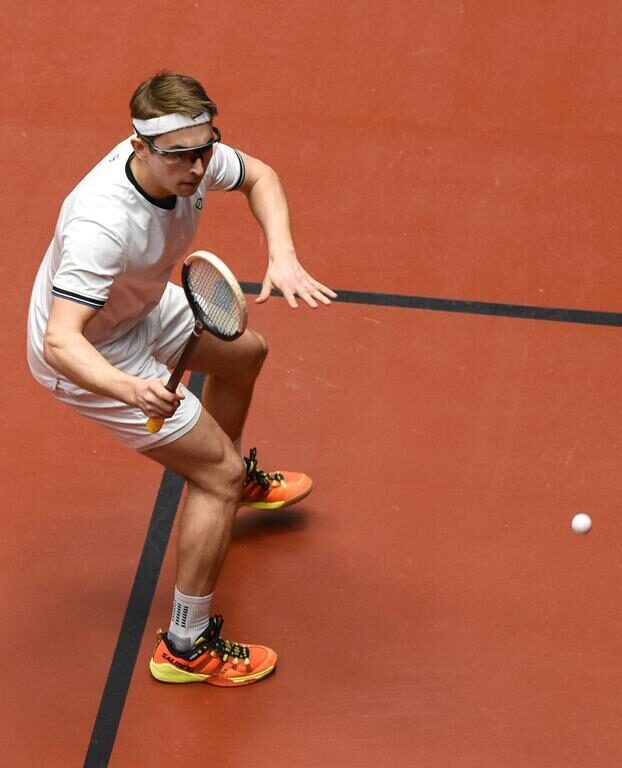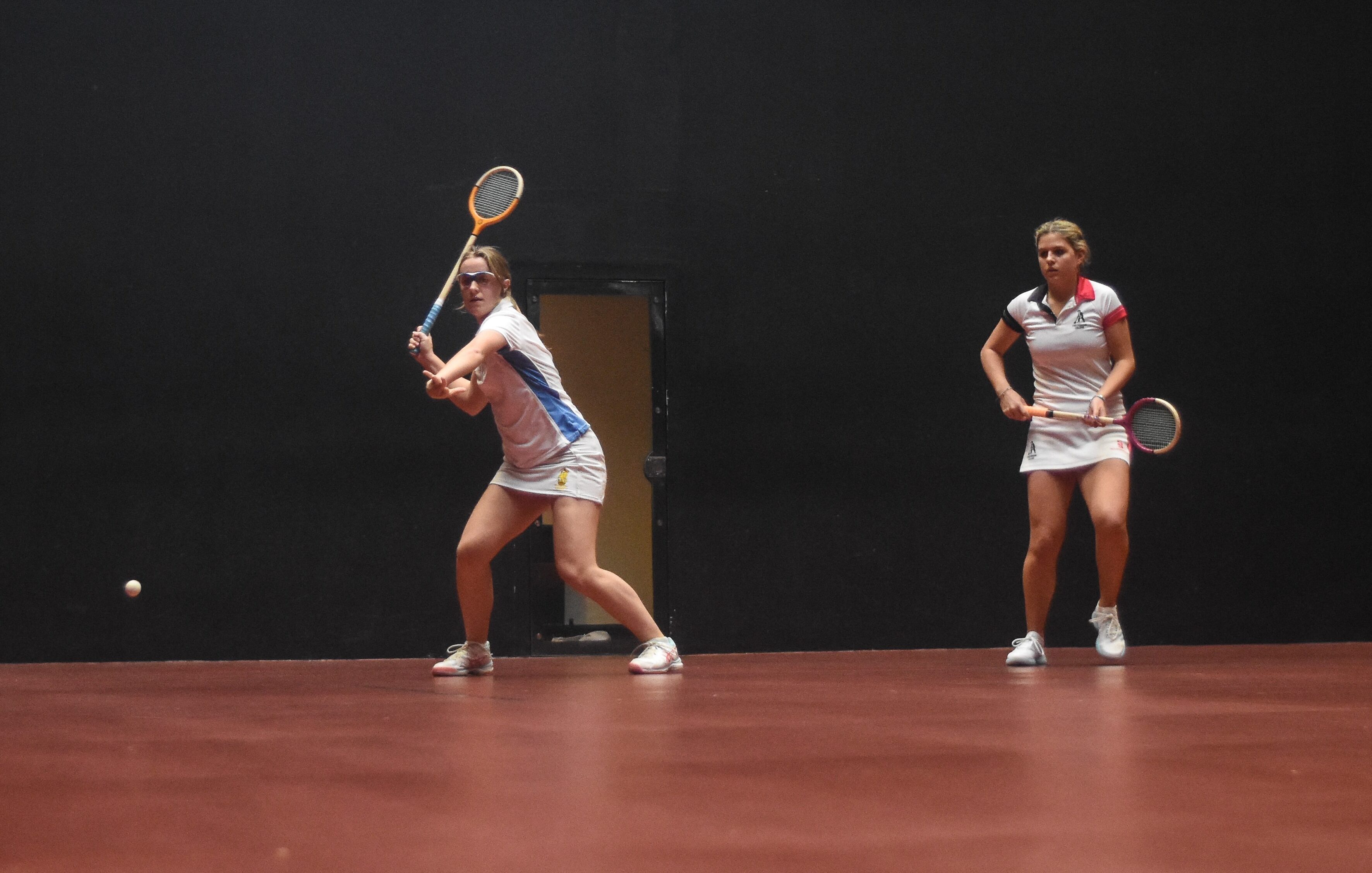How to Play Rackets
The Court and Equipment
Rackets is played in a 30-by-60-foot (9.1 by 18.3 m) enclosed court, with a ceiling at least 30 feet (9.1 m) high. Singles and doubles are played on the same court. The walls and floor of the court are made of smooth stone or concrete and are generally dark in colour to contrast with the white ball. A player uses 30.5-inch (77 cm) wooden racket to hit a 38 mm (1.5 inch) hard white ball weighing 28 grams (1 oz). Championship quality Balls are made via two different sources. One such ball is manufactured in America using a machine developed by former Marlborough professional Bill Gordon and the other type is manufactured in England by former Winchester professional Peter Ashford. The Rackets ball is durable and can last for months at a time, however its outer covering (strong tape) has to be recovered regularly. With regard to the racket itself, as of February 2021, two companies produce rackets racquets, Grays of Cambridge (UK) and Gold Leaf Athletics (US).

How to score

In gameplay, a good stroke must touch the front wall above a 26.5 inches (67 cm) high wooden (often cloth-covered) board before touching the floor. The ball may touch the side walls before reaching the front wall. The player returning a good stroke may play the ball on the volley, or after one bounce on the floor. Gameplay is basically identical to squash, albeit without drop shots or lobs! The speed of the ball and tension of the racket strings used means that the play is fast, and potentially dangerous. Lets (replayed points) are common, as the striker should not play the ball if doing so risks hitting another player. Yet unlike in squash, strokes are not given if a player gets in the way such is the often exciting and frenetic gameplay. However, this danger is minimal, since the patient coaching all players receive engrain a solid tactical awareness in all participants. Matches are normally observed by a "marker" and a “referee”, who has the duty to call "Play" after each good stroke to denote that the ball is "up". Games are to 15 points, unless the game is tied at 13–all or 14–all, in which case the game can be "set" to 16 or 18 (in the case of 13–all) or to 15 or 17 (in the case of 14–all) at the option of the player first reaching 13 or 14. Only the server (hand-in) can score—the receiver (hand-out) who wins a rally becomes the server. Return of service can be extremely difficult, and, in North America, only one serve is allowed. At the top level of the game, aces (when a server beats their opponent without their opponent touching the ball) are somewhat rarer which results in physically draining rallies. Matches are typically best of five games, but earlier rounds of some tournaments can be best of 3 games - or even an adapted 'first to 30 points' game.
The Game
The main shots played are the volley, forehand and the backhand all similar to the way one plays these in squash. Yet, in recent years the game of rackets has incorporated much greater scope for innovation in the form of reverse angles and use of power rather than the more traditional use of placement and ‘cut’. In any case, the rules and scoring in squash have evolved in the last hundred years or so whereas Rackets has changed little; the main difference today is that players are now allowed brief rest periods between games. In the past, leaving the court could mean forfeiting the match, so players kept spare rackets, shirts, and shoes in the gutter below the ‘tin’ on the front wall! This was often cumbersome and the rules were changed to allow players to leave the court to change their racket mid-game and also to have a break between games. Continuous play is paramount and a game of singles or doubles is an exhilarating spectacle and guaranteed entertainment for participants and spectators alike.
